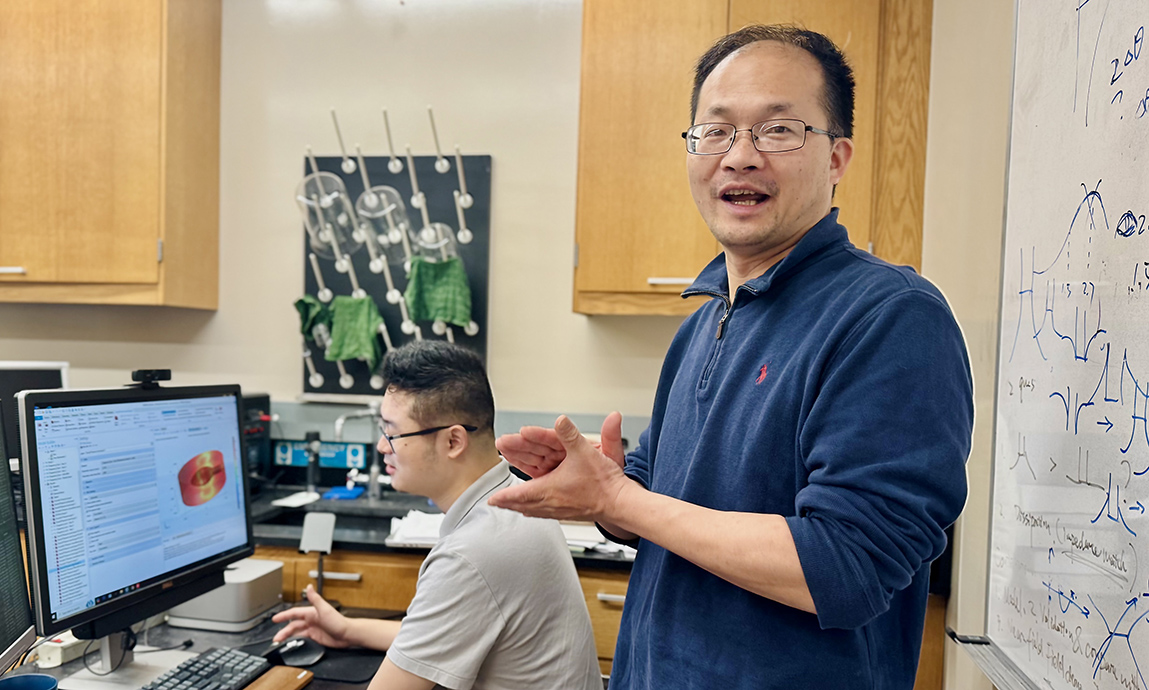The Hidden Science of Hand Clapping
Ole Miss, Cornell researchers partner to uncover what makes a hand clap pop

OXFORD, Miss. – Nearly every human culture uses clapping to cheer, protest, pray or perform, but a new study reveals that the familiar gesture is as much a scientific event as it is a social one.
Researchers from Cornell University and the University of Mississippi partnered on a study published in Physical Review Research that delved into the science behind a round of applause.
"This is the first time we have had a systematic study where we integrate physical experiments and theoretical modeling, and it's only possible because of the collaboration between our universities," said Likun Zhang, associate professor of physics and senior scientist at the National Center for Physical Acoustics.
"The point was not to look just at the acoustics, or the flow excitation or the collision dynamics, but to look at them all simultaneously. That's an interdisciplinary effort that allows us to really understand how sound relates to hand clapping."

Likun Zhang (right), associate professor of physics and senior scientist at the National Center for Physical Acoustics, claps his hands while discussing research that he and graduate student Gioqin Liu are conducting on the physics of clapping. Photo by Clara Turnage/University Marketing and Communications
Contrary to what many believe, the noise of a clap is largely not the sound of two hands smashing into each another, the researchers said. It's actually a complex acoustical phenomenon that involves a cavity of air being compressed and pushed out of a small space.
"This is something that is so ubiquitous, but not well understood," said Yicong Fu, a doctoral student at Cornell University and lead author of the study. "We clap all the time, but we haven't thought deeply about it. That's the point of the study – to explain the world with deeper knowledge and understanding.
"It's work driven by curiosity. We want to simplify a problem and explain it to the world in a way that's eloquent and accurate."
When hands come together, they create a pocket of air between the palms. That pocket is rapidly expelled from the narrow opening between the forefinger and thumb, causing the air molecules to vibrate.
This produces sound in a similar way to what's known as Helmholtz resonance – the principle behind the tone you hear when blowing across the mouth of an empty bottle.
Using live experiments, theoretical modeling and silicone replicas of human hands, the researchers showed that the volume and duration of claps can be modified by factors such as speed, the shape of the hands and even skin softness.
"Traditional Helmholtz resonators have rigid walls – think of the glass walls of a bottle," Zhang said. "This produces a long-lasting sound that attenuates very slowly because most of the energy contributes to the acoustic signal.

The sound of applause is understood around the world, but the science behind generating it has been something of a mystery to physicists until recently. Photo by Thomas Graning/Ole Miss Digital Imaging Services
"But when we have elastic walls – let's say our hands – there's going to be more vibration of the solid material, and all of that motion absorbs energy away from the sound."
This why clapping makes a single short "pop" as opposed to a longer noise, he said.
Each hand clap is so unique that the research suggests future work could use clapping as a method of identification, like how fingerprints and retinal scans are used now.
"One of the most promising applications of this research is human identification," said Guoqin Liu, an Ole Miss graduate researcher in the acoustics center. "Just through the sound, we could tell who made it."
The research can also help inform music education – where claps are often used for rhythm timing – and teach future students about how small air cavities contribute to sound production and resonance.
"This is the science behind our daily lives," Liu said. "Everyone uses hand claps, but at the same time, it is interesting that every person's clapping has a different sound, a different frequency and a different resonance.
"We all clap, sometimes on a daily basis. But understanding the science behind it is something new, and that's what we were trying to do."
This material is based on work supported in part by the National Science Foundation grant no. CBET-2401507.
Top: Clapping hands is used worldwide to indicate happiness, pride, excitement and a number of other emotions. But each time you put your hands together, you are also performing a complex acoustical process that – until a recent study from Cornell University and the UM National Center for Physical Acoustics – was relatively unknown. Photo by Srijita Chattopadhyay/Ole Miss Digital Imaging Services
By
Clara Turnage
Campus
Office, Department or Center
Published
May 28, 2025
